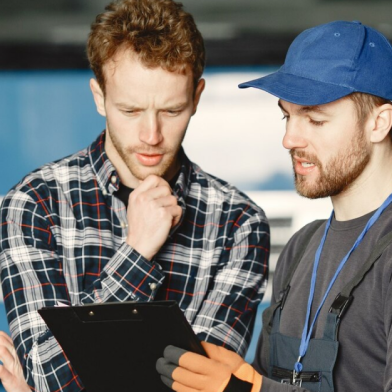How cool it is to see a virtual layout of your room before moving any furniture! That’s what Apple’s RoomPlan allows you to do.
This augmented reality technology transforms devices into powerful tools for visualizing spaces in incredible detail. Whether you’re in real estate, e-commerce, or hospitality, RoomPlan offers a game-changing way to visualize spaces and make decisions faster. It also helps streamline conceptual exploration in architecture and interior design, making planning more efficient and accurate.
For app developers, this means new possibilities for adding advanced AR features to their apps. Regularly ranked among the top custom software development companies on Clutch, our team at Volpis has spent years creating custom augmented reality applications for businesses. In this article, we want to delve into RoomPlan: what it is, how it works, and how it’s used in real-world scenarios.
And if you have any questions about using Apple’s RoomPlan or developing a unique AR app for your business, we would be happy to answer all your questions and give honest advice. You can always reach out to us via info@volpis.com with any questions.
What is Apple’s RoomPlan?
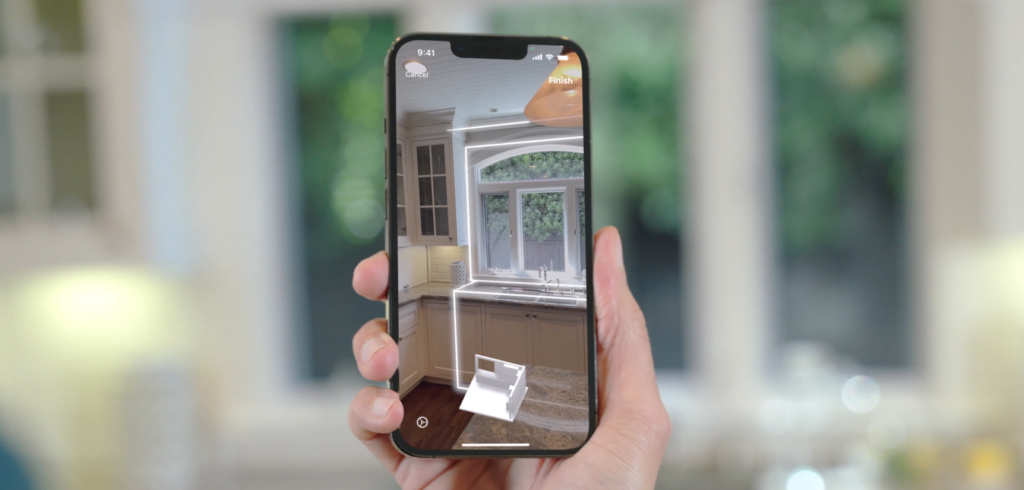
RoomPlan is a tool from Apple that uses augmented reality to make accurate 3D models of indoor spaces. It works with the LiDAR Scanner to measure a room’s size and the objects in it. LiDAR (Light Detection and Ranging) is a technology that measures distances by illuminating the target with laser light and analyzing the reflected light. This allows for highly accurate mapping of indoor spaces, making it an ideal tool for creating detailed 3D models.
Apple’s RoomPlan is part of ARKit 6, letting developers create apps that make detailed 3D floor plans, which can be used in many fields such as interior layout planning and real estate virtual tours.
Apps that make 3D floor plans using iPhone and iPad cameras have been around for a while, but they weren’t very accurate. When Apple added the LiDAR scanner to the 2020 iPad Pro and iPhone 12 Pro, it became easier to measure object dimensions accurately.
With iOS 16, Apple combined LiDAR with the iPhone and iPad cameras in the new RoomPlan API, allowing users to create 3D floor plans quickly. Apple says this API is very precise and easy to use, making it helpful for apps in real estate, architecture, and interior design.
How RoomPlan works: creating augmented reality experiences
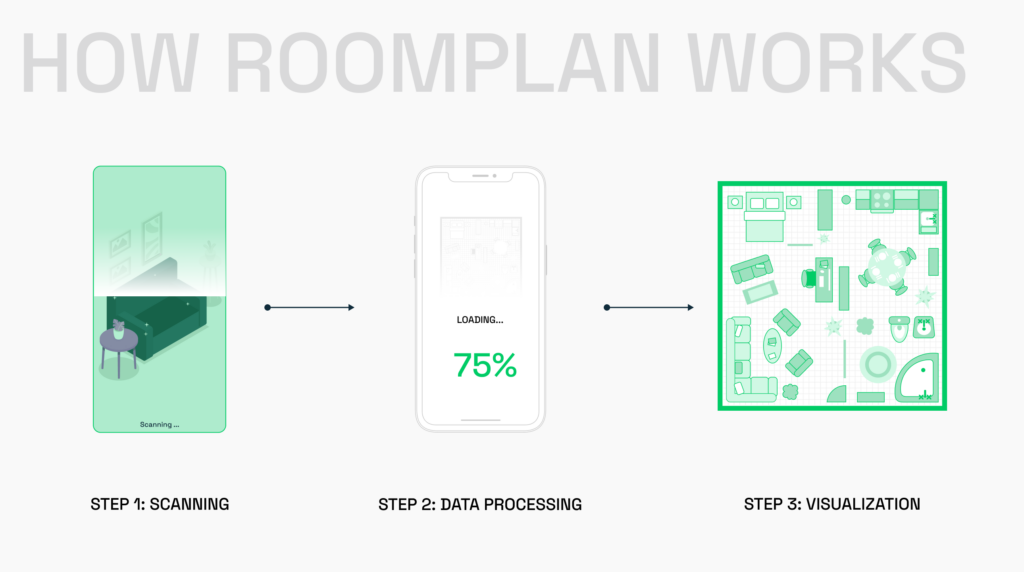
RoomPlan utilizes the LiDAR Scanner’s capabilities to scan a room and collect data on its layout and contents. Here’s a step-by-step overview of the process:
Step 1: Scanning
The user scans the room using a compatible iPhone or iPad. The device collects detailed data on the room’s dimensions and the placement of objects within it.
Step 2: Data processing
RoomPlan processes the collected data to generate a 3D model of the space. This model includes precise measurements and accurately positioned objects.
Step 3: Visualization
The 3D model can be viewed and interacted with within the app. Users can explore the model, make adjustments, and use it for various purposes such as planning renovations or showcasing properties.
Real-world applications of RoomPlan
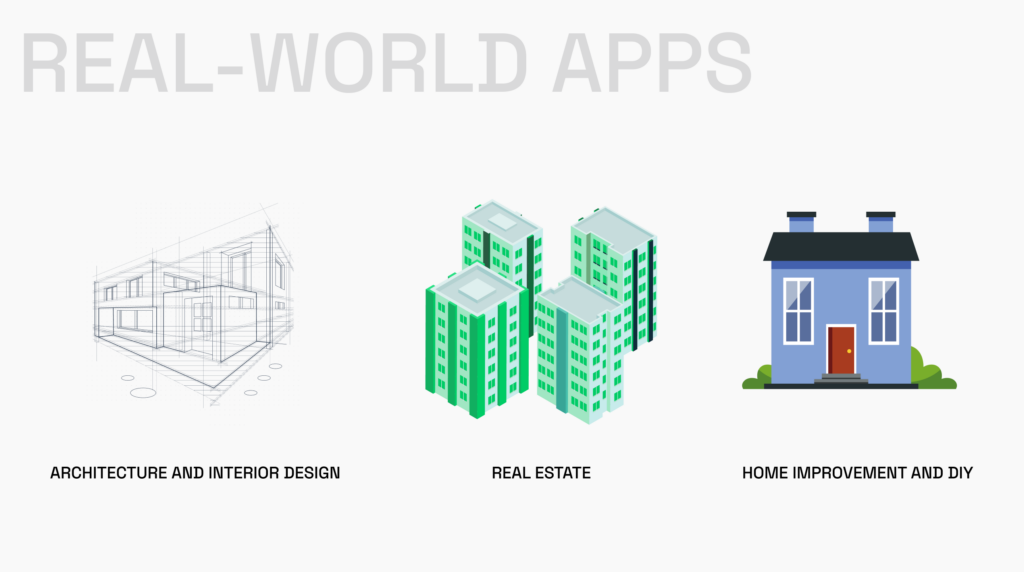
The versatility of Apple RoomPlan makes it suitable for a wide range of applications:
Architecture and interior design
Professionals can use RoomPlan to create detailed floor plans, visualize design concepts, and present them to clients in an engaging AR format.
Real estate
Real estate agents can offer virtual tours of properties, allowing potential buyers to explore spaces in 3D and gain a better understanding of the room layouts.
Home improvement and DIY
Homeowners can utilize RoomPlan to plan renovations, rearrange furniture, and visualize changes before implementing them.
Key benefits of using Apple’s RoomPlan for building AR apps
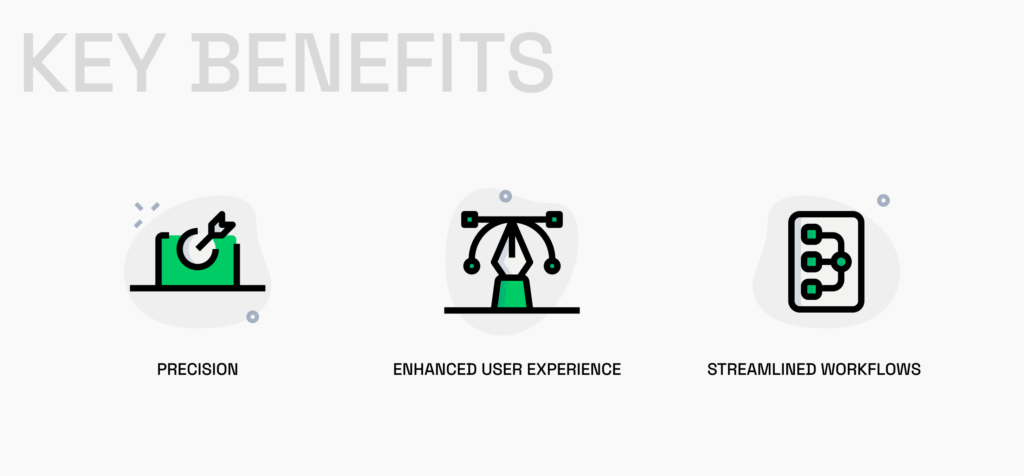
By leveraging RoomPlan, you can enhance your app’s functionality, provide a superior user experience, and streamline workflows.
1) Precision
The LiDAR Scanner’s depth-sensing technology ensures that the measurements and 3D models produced by RoomPlan are precise and reliable. This accuracy is crucial for professionals in fields such as architecture, interior design, and real estate, where exact dimensions are essential.
2) Enhanced user experience
Incorporating RoomPlan into your app provides users with an immersive and interactive AR experience. They can visualize and manipulate 3D models of their spaces, making it easier to plan renovations, arrange furniture, or evaluate properties.
3) Streamlined workflows
RoomPlan automates the creation of floor plans, saving time and minimizing the potential for human error. This efficiency is valuable for professionals who need to produce accurate floor plans quickly and consistently.
How our developers use Apple’s RoomPlan to create custom AR apps

The Volpis team has been leveraging the power of AR technologies to build robust apps and assist business owners in achieving unparalleled milestones. One recent example is Room Xpand, where we used Apple’s RoomPlan to create an app that creates accurate 3D models and 2D floor plans in real time.
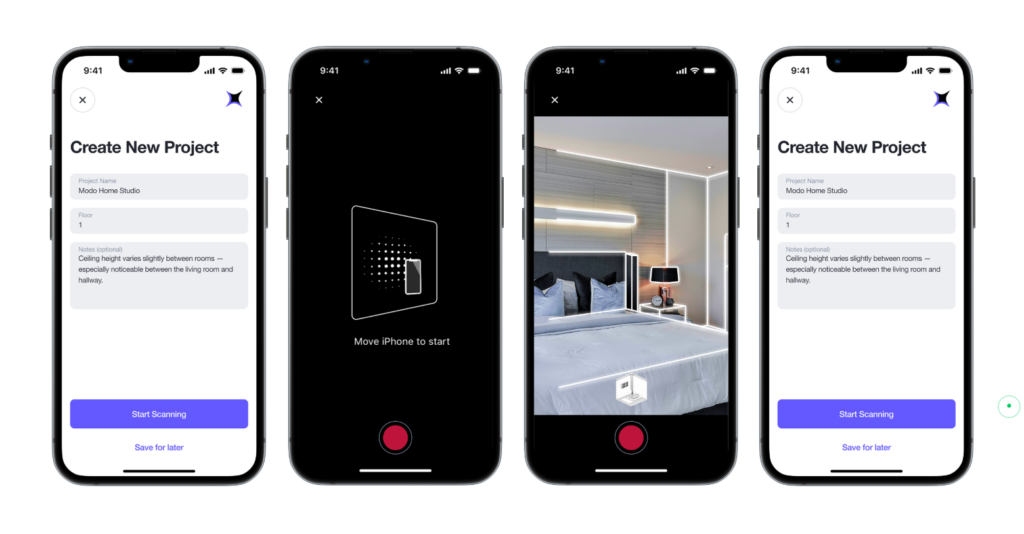
Room Xpand makes it easy for professionals and homeowners to scan and visualize rooms. With a simple, user-friendly design, the app helps you scan spaces, adjust layouts, and take accurate measurements in just a few clicks.
How we can leverage Apple’s RoomPlan to build an AR app for your business
Consistently recognized as one of the leading custom software development companies by Clutch, Volpis specializes in building custom applications for businesses. We would be happy to build a totally one-of-a-kind application for your company!
Our commitment to excellence is reflected in the glowing reviews from our customers, who consistently praise our dedication to delivering exceptional results. Our team, consisting of over 40 in-house experts, brings extensive experience and creativity to each project. We invite you to explore our portfolio for a detailed look at the innovative software systems we have developed for our clients.
We’d love to answer any questions you may have about Apple’s RoomPlan, building an AR app, creating 3D models of indoor spaces, or the development process. You can always reach out to us via info@volpis.com with any questions or to explore how we can be part of your journey.
Questions & Answers
FAQ
What is Apple RoomPlan?
Apple RoomPlan is an advanced tool that harnesses augmented reality (AR) technology, specifically leveraging Apple Vision Pro and ARKit to create precise 3D models of indoor spaces. This technology allows users to scan rooms using their iPhone or iPad, enabling accurate room layout estimation and visualization of virtual objects within physical environments. RoomPlan utilizes machine learning and augmented reality technology to enhance AR experiences, making it ideal for applications in architecture, interior design, and real estate virtual tours.
What is the purpose of AR apps?
AR apps serve to seamlessly blend virtual content with the user’s environment, enhancing real-world experiences through spatial computing and object recognition. By utilizing AR technologies like Apple’s RoomPlan API and Swift API, developers can create an immersive AR experience on iOS devices such as iPhone and iPad. These apps enhance AR experiences by providing realistic representations of the physical world and virtual objects, thereby revolutionizing fields like e-commerce, where 3D objects can be viewed in real-world settings.
Can we convert a 3D model from RoomPlan into a 2D floorplan?
Yes, it is possible to convert a 3D model from RoomPlan into a 2D floorplan using custom solutions. This involves extracting and processing the 3D data to create an accurate 2D representation of the space. Please note that this functionality is not available by default in RoomPlan. Our team can handle this transformation for you; please contact us via info@volpis.com with any questions.
Does Android support LiDAR / RoomPlan?
Android devices do not natively support Apple’s ARKit, including the RoomPlan feature, as ARKit is an Apple-specific framework designed for iOS devices. However, Android devices do have their own augmented reality frameworks and technologies.
What is the accuracy of RoomPlan?
RoomPlan, leveraging the advanced capabilities of the LiDAR Scanner, provides highly accurate 3D models and measurements of indoor spaces, generally within a few centimeters. This precision makes it suitable for professional use in fields such as architecture, interior design, and real estate. Additionally, the accuracy of RoomPlan tends to improve with each new device release and SDK update, as Apple continually enhances the capabilities of the LiDAR Scanner and ARKit, leading to more precise and reliable performance over time.
What devices support RoomPlan?
RoomPlan is supported on iPhone and iPad models equipped with a LiDAR Scanner. This includes the iPhone 12 Pro, iPhone 12 Pro Max, iPhone 13 Pro, iPhone 13 Pro Max, and later models. Additionally, it is supported on iPad Pro models that feature the LiDAR Scanner. RoomPlan is available starting from iOS 16 and utilizes the advanced capabilities of these devices for accurate 3D scanning and modeling.
Can I convert the 3D model to other formats?
Yes, the 3D models generated by RoomPlan can be converted to various other formats. After exporting the 3D data, you can use specialized software or custom scripts to convert it to formats such as OBJ, STL, or FBX. This allows for greater flexibility in using the models across different applications and platforms. Our team can assist you with the conversion process if needed; please reach out to us for more information

Kostya Khuta, the CEO of Volpis, is an expert in crafting custom software solutions for the Fleet Management, Logistics, and Transportation industry. With over 8 years of experience, he leads the way in delivering innovative and tailored solutions to meet industry-specific needs.


